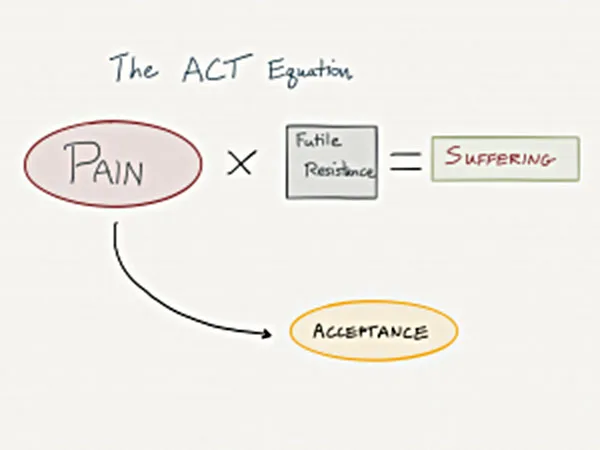PSYCHOTHERAPY The concept of the ‘self’ has been such a fundamental component of culture throughout time. It goes as far back as the development of language. The individual nature of people, while existing in a group context, was important to distinguish strengths within a group. This includes interpersonal patterns, and principles culminating in love and attachment. To have a ‘self’ is to both be unique and decisive through volition or via mechanisms outside one’s control. For example, gifted athletes often build a passion for sports due to the positively reinforcing qualities of mastery and recognition. The same athlete may innately possess their flavor of self regardless of a passion for sports.
The Self
Early literature has declared the ‘self’ one of the pillars of most good stories. The search for this ‘self’ a captivating and timeless story arc. The late literary historian, Joseph Campbell, would often dissect what he termed the ‘hero myth’. He referred to a set of common themes all connected to this journey for the protagonist to find him or herself. As he would visit such stories ranging from Beowulf to Star Wars, he would identify the humanistic part of the story which would grab the attention of the reader. The protagonist was about to embark on a journey. With the guidance of mentors they would achieve something that was, in a sense, waiting for them. The ‘self’ of each person is waiting but is lost through life itself, especially when we’re talking about addiction. Examples of the loss of self in alcoholism can include personal relationships harmed, physical self-neglected, or emotional disturbances which have harmed your ability to succeed. Some of the most significant casualties of this disease are subtle. For people with children, there may exist this component of a parent seeming ‘unavailable’ to the emotional needs of their child while struggling with alcohol relapses.
Definition of Shame
Shame has many definitions and there is much in clinical literature researching shame and its impact on alcoholism. Some of the writings by the author and speaker Brene Brown are useful to explore shame on a deeper level. Her definition is that shame involves the primal fear of being ‘cast out’ from a group. This group could include a family unit, a professional career, or an abstract framework in your mind of what you are supposed to be. By experiencing this intense fear, overwhelming anxiety may paralyze a person. In the cycle of addiction, it is common to harm other people in a multitude of ways or to harm your sense of self. Shameful pasts can haunt people their whole lives and lead to the cycle of self-loathing and continued drug use. It is unbearable for the mind to hold such disdain for itself such that drinking can seem like a temporary solution to the emotional pain. This proceeds as a vicious cycle of continued relapsing, continued harm, and a low sense of self-worth. We need to break the cycle while appreciating that working through shame can be triggering for relapse. If you have no stability under your belt, the chances are poor of you successfully walking through such shameful concepts without relapsing on your drug of choice.
ACT Theory
An emerging psychotherapy from the mid-1980’s is Acceptance and Commitment Therapy or ACT, developed initially by Steven Hayes. Much of this form of therapy was based on a philosophical ‘proof’ that actual suffering through patterns of futile resistance could magnify pain. Hence, the goal of the therapy is to learn deeper meanings behind acceptance in one’s life and to embrace change through feasible avenues. ACT has strong roots in Cognitive Behavioral Therapy and Mindfulness practices and introduces some additional terminology such as Expansion and Diffusion. One of the easiest to read and comprehensive books on ACT is written by Steven Hayes, titled The Happiness Trap. Acceptance approaches can be helpful in alleviating some of the pain of your shame. The core equation used in ACT is illustrated below.  An exercise commonly employed through ACT programs is the Value – Commitment list. This is self-explanatory and involves the participant identifying concrete ways to bolster value structure. Finding a true self seems to go hand-in-hand with one’s sense of values. Also, the shame of addiction tends to be associated with the loss of values, often in an effort to acquire drugs and keep the disease afloat.
An exercise commonly employed through ACT programs is the Value – Commitment list. This is self-explanatory and involves the participant identifying concrete ways to bolster value structure. Finding a true self seems to go hand-in-hand with one’s sense of values. Also, the shame of addiction tends to be associated with the loss of values, often in an effort to acquire drugs and keep the disease afloat.
Values
A template for the Values – Commitment list is as follows:  More advanced versions of this list can be made, especially with a time-lapse component. How would you write this list one year prior to developing your addiction? What did you care about at that time? How would it look one year-deep into your addiction? Was there already distortion in your priorities? Were your relationships starting to be strained due to how you lived or the things you had said? Exercises such as this can shed light on value patterns over time and can help you heal to a greater level.
More advanced versions of this list can be made, especially with a time-lapse component. How would you write this list one year prior to developing your addiction? What did you care about at that time? How would it look one year-deep into your addiction? Was there already distortion in your priorities? Were your relationships starting to be strained due to how you lived or the things you had said? Exercises such as this can shed light on value patterns over time and can help you heal to a greater level.
A Life Worth Living
By building a life worth living, you help solidify your recovery on a much deeper level than purely through abstaining from substances. This life is one based on values, understanding your true self, and accepting that relapse will derail such things. Also connected to ACT theory as discussed above is the understanding that legitimate acceptance of one’s health needs is a core ingredient of a sustainable recovery. This trait is so vital to your recovery arc that it is always worth revisiting. At this stage of change, how secure do you feel in the ability to abstain from your drug of choice? How much do you acknowledge the flawed fantasy of ‘controlled drinking’ amidst your addiction? The goal of recovery is not necessarily to change your emotional connection to alcohol. Many people in long-term recovery are able to acknowledge the pull to drink while accepting the inevitable road they will go down. A phrase used in 12-step programs is to “play the tape through.” This involves seeing the whole picture – the fantasy of using and the realization of the harm.
Building Long-Term Recovery
Long-term recovery people are able to envision a life of recovery and things they want for themselves. In this sense, we need to embrace a mentality of building. What are the possible construction projects you could place on your table for the next 6 months?
- Reconnecting with positive people in your life whom you alienated through your addicted self
- Assessing your career status and workplace satisfaction
- Identifying core health goals that had been put off for too long such as weight loss or exercise goals
- Consider learning something new. As addiction always connects to dopamine in some way, so does life satisfaction. Learning something new such as a hobby increases dopamine and has been linked to greater relationship satisfaction
Accepting one’s disease, committing to health, understanding your true self, and building a life worth living – This is Recovery. Read more CeDAR Education Articles about Psychotherapy including Intro to CBT and Dynamic Therapy.1
